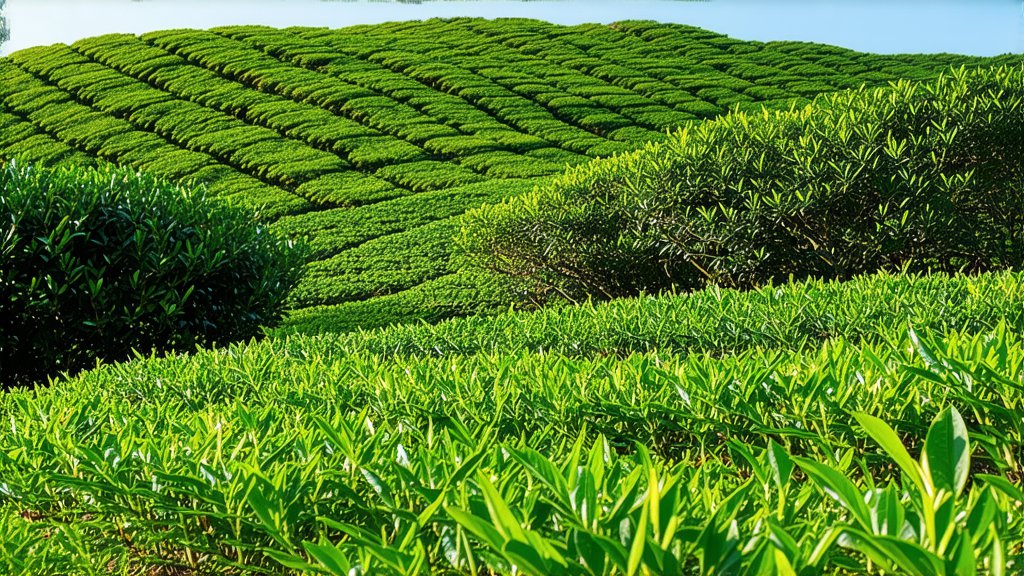
Tieguanyin, often referred to as the "Iron Goddess of Mercy," is a variety of oolong tea that has captured the hearts and palates of tea enthusiasts around the world. Originating from Anxi County in the Fujian Province of China, this exquisite tea boasts a rich history intertwined with Chinese culture and traditions. In this article, we will delve into the fascinating journey of Tieguanyin Oolong Tea, exploring its historical roots, the diverse types within this category, the intricate process of its production, and the art of appreciating its unique flavor profile.
Historical Background
The story of Tieguanyin dates back to the early Qing Dynasty (1644-1912), specifically to the reign of Emperor Yongzheng (1722-1735). According to legend, a poor scholar named Wei Yin discovered a wild tea plant on a mountainside near Anxi County. He brought the tea plant home, propagated it, and began cultivating it in his garden. As fate would have it, Wei Yin later became a successful businessman and used his newfound wealth to support local charities and help those in need. In gratitude for his benevolence, the villagers named the tea after him, combining the characters for "iron" (tie) and "mercy" (guanyin), thus creating the name "Tieguanyin."
Types of Tieguanyin Oolong Tea
Tieguanyin encompasses several sub-varieties, each with its own distinct characteristics and flavor profiles. Some of the most notable types include:
- Xianglu Zhongzhi (Fragrant Deer): This variety is known for its strong aroma and sweet taste, reminiscent of fresh deer antlers.
- Huangjin Gui (Golden Osmanthus): Named after the osmanthus flower, this type features a delicate floral fragrance and a smooth, mellow flavor.
- Bai Hao (White Down): Recognized by its silver-white downy buds, Bai Hao offers a light, refreshing taste with hints of fruitiness.
- Shuixian (Narcissus): With a more robust flavor profile, Shuixian exhibits notes of orchid and a slightly sweet finish.
These variations cater to different preferences, allowing tea connoisseurs to explore the vast spectrum of flavors that Tieguanyin has to offer.
The Art of Tieguanyin Production
The craftsmanship behind Tieguanyin Oolong Tea is a testament to the skill and dedication of Chinese tea masters. The process involves several meticulous steps:
- Plucking: Only the tenderest leaves and buds are handpicked, usually during the spring and autumn harvests when the tea plants are at their peak vitality.
- Withering: Freshly plucked leaves are spread out in thin layers to wilt under the sun or in a controlled environment, reducing moisture content and softening the cell walls.
- Fixation: The withered leaves undergo a brief heating process to halt oxidation, preserving the greenish hue and fresh aroma of the tea.
- Rolling: Leaves are then rolled to release their essential oils and shape them into tight pellets or twisted strands, enhancing the overall appearance and flavor concentration.
- Oxidation: Controlled exposure to air allows partial oxidation, striking a balance between green and black tea characteristics, giving Tieguanyin its unique semi-oxidized nature.
- Roasting: Finally, the tea is roasted to remove any remaining moisture, further developing its complex flavors and aromas while ensuring longevity.
This intricate process requires years of experience and expertise, making each batch of Tieguanyin a true work of art.
Appreciating Tieguanyin: The Gongfu Tea Ceremony
To truly appreciate the depth and complexity of Tieguanyin, one must engage in the traditional Chinese Gongfu Tea Ceremony. This ritualistic practice emphasizes mindfulness, respect for the tea, and the shared experience among friends or family. Here's a simplified guide to performing the ceremony:
- Preparation: Gather your tea set, including a gaiwan (lidded bowl), teapot, cups, and a pitcher of hot water. Use high-quality spring water to ensure purity and enhance the tea's natural flavors.
- Warming: Rinse the teaware with boiling water to cleanse and warm them up, discarding the initial rinse water.
- Infusion: Place approximately 5 grams (about a teaspoon) of Tieguanyin into the gaiwan. Steep in hot water (around 85-90°C or 185-195°F) for 15-30 seconds for the first brew. Subsequent infusions can be adjusted based on personal preference, increasing steeping time gradually.
- Pouring: Decant the brewed tea into cups, ensuring even distribution. Appreciate the color, clarity, and aroma before savoring each sip slowly, focusing on the evolving flavors and textures.
- Repeat: Tieguanyin can be steeped multiple times, revealing different facets of its character with each infusion. Enjoy the journey through its transformations.
Through this ceremonial approach, not only do you get to fully experience the nuances of Tieguanyin, but you also cultivate a deeper appreciation for the cultural heritage it embodies.
In conclusion, Tieguanyin Oolong Tea stands as a shining example of China's rich tea tradition, blending history, artistry, and sensory delight. Whether you're a seasoned tea drinker or a curious novice, embarking on the exploration of this enchanting beverage promises a rewarding adventure for both the palate and the soul.